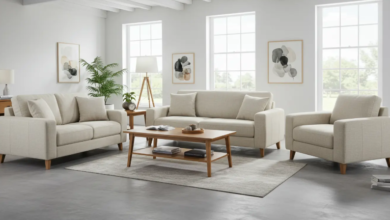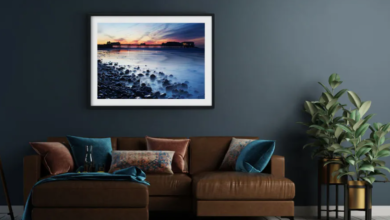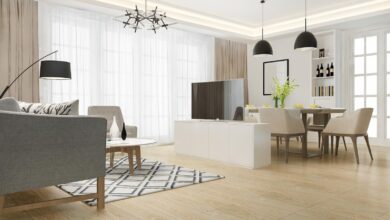High-end Custom Commercial Interior Design: Transforming Business Spaces with Sophistication and Purpose

In the modern business world, design goes far beyond aesthetics. It’s about creating a space that reflects your brand’s identity, supports productivity, and leaves a lasting impression on clients and employees alike. This is where high-end custom commercial interior design takes center stage. It combines luxury, functionality, and brand storytelling to transform ordinary commercial spaces into extraordinary environments that inspire success.
From boutique hotels and flagship retail stores to upscale corporate offices and restaurants, the power of thoughtful design is undeniable. Let’s explore how custom commercial interiors redefine modern business spaces and what makes a truly high-end design stand out.
1. Understanding High-End Custom Commercial Interior Design
At its core, high-end custom commercial interior design focuses on creating personalized, luxurious, and functional spaces tailored to the specific needs of a business. Unlike standard interior designs that use pre-set templates or off-the-shelf furnishings, custom commercial interiors are curated from scratch—each element chosen to align with the company’s mission, culture, and target audience.
These designs integrate architectural precision, fine materials, bespoke furniture, and innovative lighting to create an environment that’s both visually captivating and purpose-driven. It’s not about being flashy; it’s about cultivating a timeless sense of sophistication and usability.
2. The Role of Customization in Commercial Design
Customization is what separates a generic workspace from a branded environment. Businesses today understand that their interiors are an extension of their identity. Every color, material, and spatial decision sends a message to clients and employees.
For example, a law firm might prefer a sleek, minimalist design with warm woods and neutral tones to convey trust and professionalism. On the other hand, a creative agency might embrace vibrant palettes, open layouts, and playful art installations to reflect innovation and energy.
High-end designers take the time to understand their client’s brand narrative, translating it into design language through custom millwork, branded wall graphics, tailored lighting, and furniture designed exclusively for the space. This personalization ensures the environment is not only visually appealing but also emotionally resonant.
3. The Key Elements of a High-End Commercial Space
a. Exceptional Materials
Premium materials set the foundation for a luxurious atmosphere. Designers often use marble, granite, exotic woods, brushed metals, and glass to achieve a refined look. Textures also play a vital role—handcrafted finishes, natural fabrics, and custom upholstery add tactile richness to the space.
b. Thoughtful Lighting Design
Lighting is one of the most influential aspects of interior design. High-end commercial spaces utilize layered lighting—ambient, task, and accent—to create depth and drama. Smart lighting systems, which adjust brightness and color temperature based on time of day or activity, enhance comfort while conserving energy.
c. Spatial Flow and Functionality
A luxurious space is not just beautiful—it’s intelligently designed. The layout should optimize movement, collaboration, and privacy. Designers consider traffic patterns, acoustic balance, and furniture placement to ensure seamless functionality.
d. Bespoke Furniture and Fixtures
Custom-designed furniture elevates a space instantly. It ensures the perfect fit, function, and aesthetic harmony. High-end interiors often feature furniture crafted by artisans or sourced from exclusive design houses, adding an element of exclusivity and craftsmanship.
e. Integration of Technology
Modern commercial design embraces technology as a seamless part of the aesthetic. This includes automated lighting, integrated sound systems, digital displays, and touchless controls—all carefully embedded into the environment to maintain clean lines and a minimalist feel.
4. How Design Enhances Brand Identity
A business’s physical space is often the first point of contact for clients and customers. That’s why every design element must communicate brand identity effectively.
For instance, a luxury retail boutique might emphasize open space, subtle lighting, and premium finishes to highlight exclusivity. In contrast, a tech company’s headquarters might showcase innovation with transparent meeting rooms, digital art installations, and flexible workspaces.
High-end commercial interior design focuses on storytelling—translating a company’s mission and values into tangible experiences. Through color psychology, spatial arrangement, and material selection, designers create an environment that speaks the language of the brand.
This branding-through-design approach helps businesses stand out in competitive markets and fosters emotional connections with visitors.
5. The Balance Between Aesthetics and Function
Luxury design isn’t only about appearances—it’s about creating a space that supports the needs of the people who use it. Functional design ensures that every square foot serves a purpose.
For offices, this might mean integrating ergonomic workstations, collaborative zones, and quiet pods. For restaurants, it’s about maximizing seating comfort, improving flow between the kitchen and dining areas, and creating lighting that enhances mood.
Designers use spatial analysis and behavioral insights to strike the perfect balance between elegance and efficiency. When functionality and beauty coexist, the result is a space that feels both inspiring and effortless.
6. Sustainability and Smart Design in Modern Luxury
Today’s definition of high-end goes hand in hand with sustainability. Businesses and designers alike are embracing eco-conscious principles to create spaces that are not only stunning but also responsible.
Sustainable design can include:
- Using recycled or locally sourced materials
- Incorporating energy-efficient lighting and HVAC systems
- Choosing low-VOC paints and finishes
- Installing water-saving fixtures
- Integrating natural light and ventilation
Green certification programs like LEED or WELL Building Standard are increasingly influencing commercial design strategies. Sustainable luxury proves that businesses can achieve opulence without compromising the planet’s well-being.
7. The Process Behind a Custom Commercial Design Project
Creating a high-end commercial space requires a collaborative and strategic process. Here’s what it typically involves:
a. Consultation and Discovery
Designers meet with the client to understand their brand, goals, and functional needs. This stage includes site visits, brainstorming sessions, and concept development.
b. Space Planning and Conceptual Design
Designers create layouts, color schemes, and visual boards that capture the intended mood and purpose of the space. They ensure that the design flow aligns with how people will interact within the environment.
c. Material and Furniture Selection
Every texture, surface, and piece of furniture is chosen to complement the design concept. Custom millwork, fabrics, and finishes are selected for durability and elegance.
d. Technical Drawings and Approvals
Detailed construction documents, lighting plans, and 3D renderings are developed for client approval and contractor implementation.
e. Construction and Installation
Once designs are finalized, contractors, artisans, and suppliers bring the concept to life under the designer’s supervision. This phase ensures the design vision is executed with precision.
f. Final Styling and Handover
The finishing touches—artwork, accessories, plants, and décor—complete the space. The final reveal showcases the seamless blend of creativity, craftsmanship, and functionality.
8. The Impact of High-End Design on Business Performance
An exceptional commercial environment does more than impress visitors—it directly influences business outcomes. Studies have shown that well-designed workspaces improve employee productivity, satisfaction, and retention. For retail and hospitality spaces, a memorable interior enhances customer experience, encouraging repeat visits and stronger brand loyalty.
Moreover, a custom-designed office or storefront positions a brand as premium and trustworthy. It communicates attention to detail, professionalism, and long-term vision—all qualities that clients value.
9. The Future of Commercial Interior Design
As technology and workplace culture continue to evolve, commercial interiors are adapting to new expectations. Future trends point toward flexible layouts, biophilic elements, hybrid work environments, and digital integration.
High-end design will continue to focus on personalization, wellness, and experience-driven spaces. The next generation of offices, hotels, and retail stores will prioritize adaptability, sustainability, and immersive brand storytelling.
Designers who combine aesthetic mastery with smart, human-centered design principles will lead the way in shaping tomorrow’s commercial environments.
10. Why Partnering with a Professional Design Firm Matters
While many businesses have a vision for their ideal space, bringing that vision to life requires the expertise of seasoned professionals. A specialized commercial interior design firm can manage every aspect—from concept development to execution—ensuring the final result meets both aesthetic and operational goals.
Professionals understand how to balance creativity with compliance, ensuring designs meet safety standards, accessibility regulations, and local building codes. Their experience with materials, lighting, acoustics, and space planning ensures the investment delivers lasting value.
One such example is Swisterski Design Inc, a firm known for crafting high-end custom commercial interiors that merge luxury with purpose. Their team of designers brings together creativity, technical skill, and strategic thinking to create environments that are not just beautiful—but transformative.
Conclusion
Investing in high-end custom commercial interior design is an investment in your brand’s future. It’s about creating an environment that tells your story, inspires your people, and captivates your clients.
From bespoke furniture and premium materials to sustainable innovation and tailored functionality, every design element contributes to the greater vision of excellence.
Whether you’re redesigning an office, launching a retail flagship, or building a hospitality space, a well-executed commercial interior has the power to elevate your business beyond expectations—turning ordinary spaces into timeless expressions of success.




